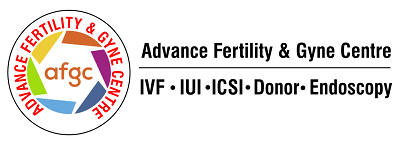Hysteroscopy plays a crucial role in the field of fertility treatments, particularly in in-vitro fertilisation or IVF. This procedure is an essential diagnostic tool that fertility specialists utilise to evaluate the health of the uterus, ensuring it’s suitable for embryo implantation and growth. If a fertility specialist identifies any issues during a hysteroscopy that could be affecting your ability to conceive, they will guide you towards appropriate fertility treatment options.
What is a hysteroscopy for IVF?
Hysteroscopy for IVF involves using a hysteroscope, a thin, lighted tube, to examine the inside of a woman’s uterus, including the cervix.
This procedure comes in two forms: diagnostic and operative. Diagnostic hysteroscopy is aimed at evaluating the uterus for potential problems, while operative hysteroscopy uses small instruments to fix any conditions found during the diagnostic process.
What is the difference between diagnostic and operative hysteroscopy?
Diagnostic hysteroscopy allows the physician to observe the uterus’s size, shape, and lining, which helps diagnose abnormalities affecting fertility or causing other gynaecological issues. In contrast, operative hysteroscopy is utilised to correct any abnormal conditions discovered during the diagnostic stage, such as removing uterine fibroids and polyps, unblocking fallopian tubes, or treating endometriosis.
-
The diagnostic role of hysteroscopy –
Hysteroscopy’s primary benefit is its ability to visualise the interior of the uterine cavity directly. This direct observation is a key advantage over other imaging techniques like ultrasounds, which may not penetrate tissue layers as effectively.
Hysteroscopy can reveal various abnormalities that could impede successful conception, such as uterine fibroids, polyps, septa, adhesions, and endometriosis. By uncovering these hidden issues, hysteroscopy equips fertility experts with the necessary information to create more targeted and effective treatment plans. This is especially critical in IVF, where understanding the uterine environment is vital for enhancing the chances of implantation and pregnancy.
-
The surgical benefits of hysteroscopy –
Hysteroscopy offers more than just diagnostic capabilities—it also provides minimally invasive surgical options. Through this technique, specialists can address various uterine abnormalities that may hinder fertility.
The process involves inserting small instruments through the cervix to perform tasks like removing fibroids and polyps, correcting uterine septa, lysing adhesions, and ablating endometriosis. These procedures are crucial in rectifying structural issues within the uterus, thereby facilitating natural conception or improving the outcomes of assisted reproductive techniques such as IVF. These surgical interventions can be pivotal in preparing the uterus for embryo implantation.
When is hysteroscopy for IVF performed?
Hysteroscopy for IVF is used to identify and address issues within a woman’s uterus that might be contributing to infertility. Operative hysteroscopy then steps in to correct these issues, often in the same procedure.
What infertility-related issues can hysteroscopy diagnose and treat?
Hysteroscopy is a critical tool used by doctors to pinpoint the causes of heavy or irregular menstrual bleeding, which may signal issues with ovulation. It plays a significant role in identifying and treating various conditions that impact a woman’s fertility. Potential applications of hysteroscopy include:
- Identifying and removing uterine fibroids, polyps, or scar tissue.
- Examining the uterus’s structure to detect a uterine septum or other anomalies.
- Conducting biopsies for further analysis.
Frequent issues that hysteroscopy helps to diagnose include congenital uterine defects like a uterine septum, tumours or scar tissue within the uterus, and chronic infections. Other less common findings during uterine evaluation may include chronic infections, precancerous cells, or inflammation caused by endometriosis.
-
Diagnosing uterine anomalies –
Polyps and uterine fibroids are often associated with infertility. Polyps, which are abnormal growths in the uterine lining, and fibroids, noncancerous muscle growths in the uterine walls, can both be identified using hysteroscopy. Following diagnosis, these tissues can be removed hysteroscopically, which often enhances the success of fertility treatments like IVF by making the uterus more receptive to implantation.
- Hysteroscopic examination is also crucial for detecting an abnormally shaped uterus or a uterine septum. These conditions can hinder a woman’s ability to conceive or maintain a pregnancy, but they can be surgically corrected.
-
Detecting chronic infections –
Biopsy guided by hysteroscopy in IVF is effective in diagnosing chronic infections that compromise female fertility. Such infections are found in about 15% of IVF patients and in roughly 42% of patients with repeated implantation failures following IVF. Treating these chronic infections has been shown to double pregnancy rates post-IVF.
-
Identifying endometriosis –
Affecting approximately 1 in 10 women, endometriosis is often linked to unexplained infertility. Nearly half of those with unexplained infertility have endometriosis, which can cause inflammation in the uterine lining and impact implantation success.
Fertility specialists can detect endometriosis by analysing endometrial tissue obtained through hysteroscopy. For example, a high percentage of women with unexplained infertility test positive for the BCL-6 endometriosis marker. Women with this marker typically have lower IVF pregnancy rates. However, treating endometriosis before embryo transfer can improve implantation and pregnancy rates. Endometrial sampling for the BCL-6 marker has proven to be a less invasive and accurate method for diagnosing endometriosis compared to other surgical procedures like laparoscopy.
Comparing hysteroscopy with other procedures
Hysteroscopy is considered the most effective method for evaluating uterine health and is more accurate in diagnosing many infertility-related conditions than other techniques. Alternatives like Hysterosalpingogram (HSG) and sonohysterogram (often known as saline infusion sonography, or SIS) have limitations.
- HSG, which uses dye and X-ray technology to examine the uterine cavity and fallopian tube connections, provides limited information about a woman’s reproductive health and cannot fully assess fallopian tube abnormalities.
HSG primarily focuses on the shape and structure of the uterine cavity and the patency of the fallopian tubes. While it is valuable for identifying blockages or major structural abnormalities, HSG lacks the ability to provide detailed insights into the uterine lining or diagnose conditions within the uterine wall, such as small fibroids or polyps.
Furthermore, its reliance on X-ray technology means it can’t offer real-time visualisation or the ability to perform therapeutic interventions, which are key advantages of hysteroscopy.
- SIS involves injecting saline into the uterus during an ultrasound to examine the endometrium. It’s effective for diagnosing certain defects and tumours but is less comprehensive than hysteroscopy for other findings.
SIS is adept at identifying larger structural abnormalities within the uterus, like significant polyps or fibroids, and providing a general assessment of the endometrial lining. However, its capability to detect finer details or smaller lesions is limited compared to hysteroscopy.
SIS also does not allow for direct intervention. If an abnormality is detected, additional procedures like hysteroscopy are typically needed for treatment. Additionally, the saline infusion provides a transient and limited view of the uterine cavity, whereas hysteroscopy offers a more prolonged and detailed examination, with the ability to navigate and visually inspect the entire uterine cavity more thoroughly.
The decision to use hysteroscopy, HSG, or SIS is influenced by various elements, such as the particular medical indications, the patient’s personal preferences, and the resources available. In general:
- Hysteroscopy is the preferred choice for an in-depth examination of the uterine cavity. It is particularly useful when specific irregularities are suspected, when surgical intervention is being considered, or if other tests have not provided clear results.
- HSG stands out for its ability to assess the openness of the fallopian tubes and identify major uterine abnormalities. However, it might not be the most suitable choice in every scenario.
- SIS is effective for evaluating the endometrial lining and detecting significant structural issues in the uterus, though it might not always provide a conclusive diagnosis.
Discussions with your healthcare provider are crucial in determining the most appropriate procedure for your unique situation and medical background.
What are the advantages of hysteroscopy for IVF?
With its minimal invasiveness and quick recovery time, hysteroscopy in IVF has become an indispensable part of fertility treatments, clearing the path to IVF success.
Hysteroscopy for IVF offers numerous benefits: it provides an excellent assessment of the uterine cavity, enhances fertility, ensures faster recovery, requires a shorter hospital stay, leaves no stitches, and allows the patient to go back to doing normal, non-strenuous activities the next day. This thorough examination of the uterine cavity ensures that any potential obstacles to implantation are identified and addressed, thereby increasing the success rate of subsequent IVF cycles.
Does hysteroscopy hurt?
Most patients undergoing hysteroscopy are under moderate sedation or anaesthesia, ensuring they feel no discomfort during the procedure. Many people do not even remember the procedure afterwards.
How long does a hysteroscopy take?
The duration of a hysteroscopy for IVF varies. In an exam room under mild sedation, it generally takes 20 to 30 minutes, while in an operating room under anaesthesia, it can extend to two hours or more, depending on the required procedures.
Can a hysteroscopy be done during menstruation?
Hysteroscopies are typically scheduled after the menstrual period and before ovulation, usually between days six and 12 of the menstrual cycle. Hormonal pills may be used to delay ovulation for the procedure without affecting future pregnancy chances.
How long is the hysteroscopy recovery time?
Hysteroscopy is usually an outpatient procedure, meaning you can return home the same day. Sometimes, a balloon may be placed in the uterus post-procedure to aid healing and prevent scarring. Pain post-procedure is generally manageable and mild.
What should you expect when undergoing hysteroscopy for IVF at Advance Fertility?
At Advance Fertility, we may recommend hysteroscopy for IVF if there are indications of uterine abnormalities, such as fibroids or polyps, or after repeated unsuccessful IVF cycles. Different patients have different medical histories and unique reproductive health challenges. But in general, the following are the things to keep in mind and expect:
Precautions and steps in hysteroscopy for IVF
Before undergoing hysteroscopy for IVF, patients might require basic blood tests and can visit either pre or post-menstrual. Fasting for 6 to 8 hours before the procedure is essential. The process includes inserting the hysteroscope through the vagina and cervix, infusing saline for better visualisation, and performing any operative procedures if necessary.
Post-hysteroscopy instructions
After hysteroscopy in IVF, patients are typically discharged within a few hours and advised to eat light food. Mild abdominal cramping, slight bleeding, and urinary discomfort on the same day are common. It’s important to avoid strenuous activities for a couple of days and follow up with your doctor for any concerns or complications.
Get started on your fertility journey.
In some cases, hysteroscopy in IVF is a vital procedure in the journey to successful fertility treatment. Its role in diagnosing and correcting uterine conditions significantly boosts the chances of a successful pregnancy.
To find out what treatment modalities can boost your chances of a successful pregnancy, we will review your medical history and current fertility issues to determine the best course of action. Schedule a check-up and consultation at any of our four clinics:
- Lajpat Nagar – https://www.advancefertility.in/lajpat-nagar-delhi/
- Noida – https://www.advancefertility.in/noida-centre/
- R. Park – https://www.advancefertility.in/cr-park-delhi/
- Gurgaon – https://www.advancefertility.in/best-ivf-centre-in-gurgaon/
At our Advance Fertility, we understand the profound wish of our patients to start families, often seeing us as their final hope. We strive to meet these expectations with dedication and care.
We are recognised for our expertise in assisting couples who have experienced unsuccessful IVF cycles. Our approach includes:
- Offering the complete spectrum of treatment within our facility
- Implementing a personalised approach with a dedicated team for each patient—a key factor in IVF success
- Maintaining an IVF laboratory that adheres to international standards.
- Equipping our Spermatorium with state-of-the-art andrology and culture room facilities
- Providing thorough education to our patients, enabling them to make well-informed decisions
Diverse treatment options we provide
Our services at Advance Fertility encompass a full range of treatments related to infertility, available in the Delhi NCR region:
- In Vitro Fertilization (IVF), including hysteroscopy for IVF if necessary
- IUI – Intra Uterine Insemination
- Treatments for male infertility
- Treatments for female infertility
- Use of donor gametes
- Specialised gynaecological surgery
- Managing IVF pregnancies
- Intracytoplasmic sperm injection
At Advance Fertility, caring for each person’s unique journey is our priority. We are committed to supporting every patient who approaches us with world-class medical care to help them fulfil their dreams of conceiving.


